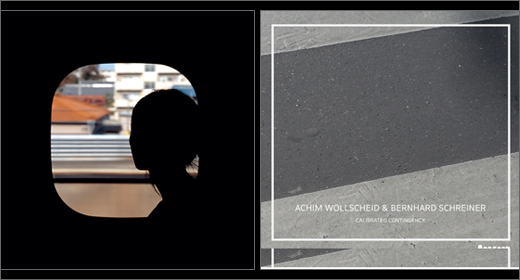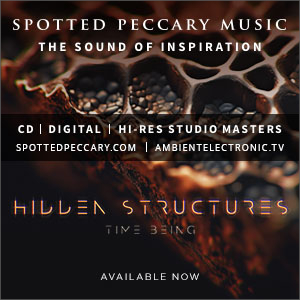Baskaru, purveyors of fine experimental electronics and sound art since 2005, issue just a few select releases each year, invariably in threes. Last sighted on igloo here, the French imprint prides itself on high artistic and visual standards, as can be seen from a roster spanning the likes of Maurizio Bianchi, Francisco López, and Lawrence English. A view of what’s new on Baskaru follows with updates from a lesser-known but no less noteworthy, and disparate, threesome–France Jobin, Laurent Perrier, and Yoshio Machida.
Since 1999 Montreal-based France Jobin has been active initially under the i8u alias on Room40, Oral, Non Visual Objects, Atak, and Dragon’s Eye, lately going nomenclature-native for Line. Jobin makes of processed field recordings organic pools with low-lying harmonic currents, a kind of microsound of Line-age lowercase. The case of The Illusion of Infinitesimal is so low you may feel the need to adjust volume and EQs, high-mid-low and figure-ground-field points of reference largely AWOL. “Zero” is so delicate its edges might fray simply at the act of being heard; the even more minimalist “+1” adds more silence and sudden sharp tones. Much occurs at the absolute threshold, as if light rays playing over a surface. Tube-blown glassine wisps of half-melody curl, translucent, into the air. High ultra-fine beeps and flickers of real-world places and objects with mercurial percussive purchase: a rustle midway through “0” like the softest graze, flutters of tiny snippings, a scuffed-string fingering guitar loop capture. Linear developmental dynamics are eschewed for odd dwellings, unwonted lulls, shifting between textured dronal swell and microsonic attenuation—sonic spaces at once evacuated and replete, expansive and intimate. Gently nudging into the interstices of low spectrum digital and analog tone, an event horizon of minimal microvariation, unfolding delicately from synthetic sustain, tonal wavering and digital crackle eliciting buried harmonics. Those with a leaning for more space to take in less, so less can be more–after the silence of Trente Oiseaux, the liminal of López, that cleave to the presence to be found in absence, will be lost in France.
Laurent Perrier presents the first three fruits of Plateforme, a concept involving creation of electro-acoustic works from a restrictive framework of sonic transmutation of sources from selected collaborators. Plateforme #1 takes seedlings sprouted by Felix Kubin, Lawrence English, and Gianluca Becuzzi and grows them into three long pieces, named after their suppliers. ‘I gave them no specific directions. I simply asked them to send me raw stuff close to their sound style,’ says Perrier, who seeks to create something of his own while retaining the stamp of the originator. Rendered mostly virtually unrecognizable via copious use of granular synthesis, the sources yield widely varying products. “Felix Kubin” is fanciful and kaleidoscopic—a wild and vivid collage of sounds with Perrier emulating analog tape treatments in the style of musique concrète. A lengthy tract sliced into pieces via direct cut-and-paste collage, its alteration highlights the dynamic sound contrasts, repetitions excised, all tonal variations heard as a series of short stories. It moves from insectoid to more motor-like sound as it develops into a babbling collage. “Lawrence English” is more aetherial, stretching across the sound stage with greater resonance, as if captured in a more industrial than customary location—a slow shape-shifting drone like a rainy day engine shifting through gears. “Gianluca Becuzzi” deploys clipped resonances, looping and other click’n’cut tricks, in a Sturm und Klang of spindly glitches in roiling motions. Overall, Plateforme #1 shows Perrier to be a dab hand with a mix of ringing electro-acoustics, a snap, crackle and hiss of electronic bubble, rhythmic rubble, echo and pulse.
Music from the Synthi features the Synthi AKS, a veteran portable modular synth manufactured by EMS–an extremely flexible generative music machine with a matrix patch panel. Yoshio Machida proposes: ‘Think Max/MSP in analog terms. Except that being analog, it wasn’t entirely stable and, thus, had an organic quality that is still valued today.’ With no keyboard but plenty of knobs, it’s an open invitation for expert twiddler Machida, a man previously known for a series of MAX–ed out steelpan inquiries (e.g. Steelpan Improvisations 2001-2008). He manipulates sonic minimum to creative max, recording just three to five patterns and mixing them for each piece, all tracks but the 7-minute closer, “Nº 30” under 3 minutes. A varied set of glitches, bleeps and burbles are ushered and prodded into volatile vignettes—mainly improvised, so heavy on mood, light on melody, and the occasional rumble of a beat—as on “Synthi Nº 26,” which forms a few Pan Sonic-like rhythmic blocks. More introspective moments abound, as on “Synthi No. 16” or “Synthi 02.” It reminds in a way of Benge‘s vintage-gear fetish concept, 20 Systems (Expanding, 2007), though Machida’s act is more in the spirit of curator of a mini sound art installation exhibiting the breadth of timbral resource offered by a plain old electronic box. What strikes—oddly for what seems an ostensibly clunky machine—is a rigorous yet refined, tough yet strangely tender, delicacy, as Machida transmutes sine-wave base metal into something gold-like—dislocated arpeggios, weird wind-up bird-chirp, calling up clouds of buzzing insects, hissing or whistling into a vivid vernacular evoking the frontier spirit of electronic pioneers. Enthralling stuff for the analog synth buff.
All three releases are available on Baskaru.

















![Ndorfik & madebyitself :: Solos EP (People Can Listen) — [concise]](https://igloomag.com/wp/wp-content/uploads/2025/04/ndorfik-madebyitself-solos_feat-75x75.jpg)








